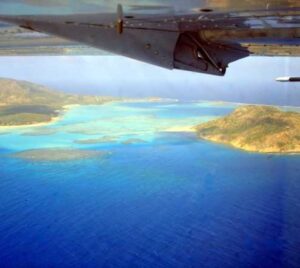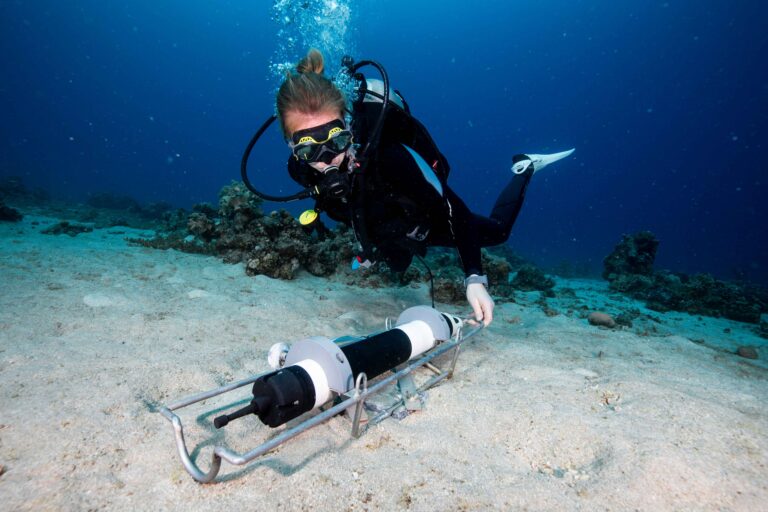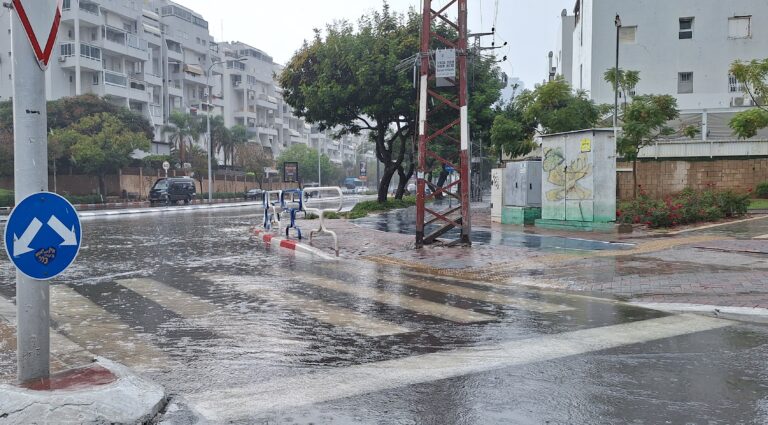Acidification des océans par le CO2 : l'UHJ et Weizmann créent une méthode pour évaluer l'impact sur les écosystèmes

[:fr]Suite à une étude océanique menée sur une bande de plus de 5000 km (de Eilat aux Seychelles, traversant la mer Rouge, le golfe d’Aden et l’océan Indien occidental), des chercheurs de l’Université Hébraïque de Jérusalem (UHJ) ont créé une nouvelle méthode pour mesurer comment l’acidification de l’eau affecte les écosystèmes de tout un bassin océanique. Conséquence directe des émissions des activités humaines, la teneur en CO2 de l’atmosphère et des océans a augmenté de façon spectaculaire au cours des dernières décennies. Dans l’océan, l’accumulation de CO2 provoque une acidification progressive des eaux de surface. Des organismes comme les coraux et un certain type de plancton ont plus de mal à construire leurs squelettes en carbonate de calcium.
Obtenir une mesure précise est compliqué car l’effet de l’acidification des océans sur les taux de calcium produits par les organismes marins est très variable et spécifique à chaque espèce. Comme les scientifiques ont tendance à utiliser des mesures de terrain locales et spécifiques au site étudié, en traitant les environnements des récifs et les environnements de haute mer séparément, leurs mesures reflètent la réponse locale des organismes individuels à des niveaux élevés de CO2, et non une image globale.
L’équipe de chercheurs était dirigée par les Pr Boaz Lazar et Jonathan Erez, le doctorant Zvi Steiner et le Pr Amitai Katz, de l’Institut Fredy et Nadine Herrmann des sciences de la Terre (UHJ), en collaboration avec le Pr Aldo Shemesh et le Dr Ruth Yam de l’Institut Weizmann des Sciences.[:en]Following a 5,000 km long ocean survey, research published in the Proceedings of the National Academy of Sciences presents a new way to measure how the acidification of water is affecting marine ecosystems over an entire oceanic basin. As a result of man-made emissions, the content of CO2 in the atmosphere and oceans has increased dramatically during recent decades. In the ocean, the accumulating CO2 is gradually acidifying the surface waters, making it harder for shelled organisms like corals (Figure 1) and certain open sea plankton to build their calcium carbonate skeletons.
Since this process impacts the functioning of many marine ecosystems, it has been intensively studied in recent years. However, getting an accurate measure is complicated because the effect of ocean acidification on the rates of calcium produced by marine organisms is highly variable and species specific. Since scientists tend to use local and site-specific field measurements, treating reef environments and open sea environments separately, their measurements reflect the local response of individual organisms to elevated CO2 levels, and not the overall picture.
To get a clearer picture of how ocean acidification is affecting large marine areas, a group of Israeli researchers studied a 5,000 km long strip of ocean (Figure 2), from Eilat to the Seychelles crossing the Red Sea, the Gulf of Aden and the Western Indian Ocean.
The group was led by Profs. Boaz Lazar and Jonathan Erez and the Ph.D. student Zvi Steiner, together with Prof. Amitai Katz, all from the Fredy and Nadine Herrmann Institute of Earth Sciences at the Hebrew University of Jerusalem, together with Prof. Aldo Shemesh and Dr. Ruth Yam of the Weizmann Institute of Science.
The researchers developed a new method to simultaneously assess the overall calcification rates of coral reefs and pelagic (open sea) plankton over a whole oceanic basin, based on variations in surface water chemistry. These variations result from the tendency of organisms that precipitate calcium carbonate skeletons to replace some of the calcium in their skeletons with other elements (e.g. the element strontium). These replacements depend on growth conditions and are typical for each group of organisms. Owing to this characteristic, corals produce calcium carbonate with a different chemistry than calcareous (composed largely of calcium carbonate) plankton, and their overall effect alters the chemistry of the ocean water. This is the first study that demonstrates the feasibility of quantifying this type of information on an oceanic basin scale.
The group estimated that pelagic plankton precipitate 80% of the Red Sea calcium carbonate, and coral reefs precipitate about 20%. This data is a crucial milestone if we wish to track the effect of anthropogenic activity originating from human actions, since it is not possible to quantify change without having objective baseline conditions.
Monitoring the variations in coral and plankton growth rates every few years can provide essential information regarding rates of environmental change in tropical and subtropical seas like the Red Sea, Caribbean and South China Sea.
The research was published in PNAS (Proceedings of the National Academy of Sciences of the United States of America) as ”Basin scale estimates of pelagic and coral reef calcification in the Red Sea and Western Indian Ocean”. The research was supported by the Israel Science Foundation, the Bill and Melinda Gates Foundation and the Israeli Ministry of Science and Technology.[:]








